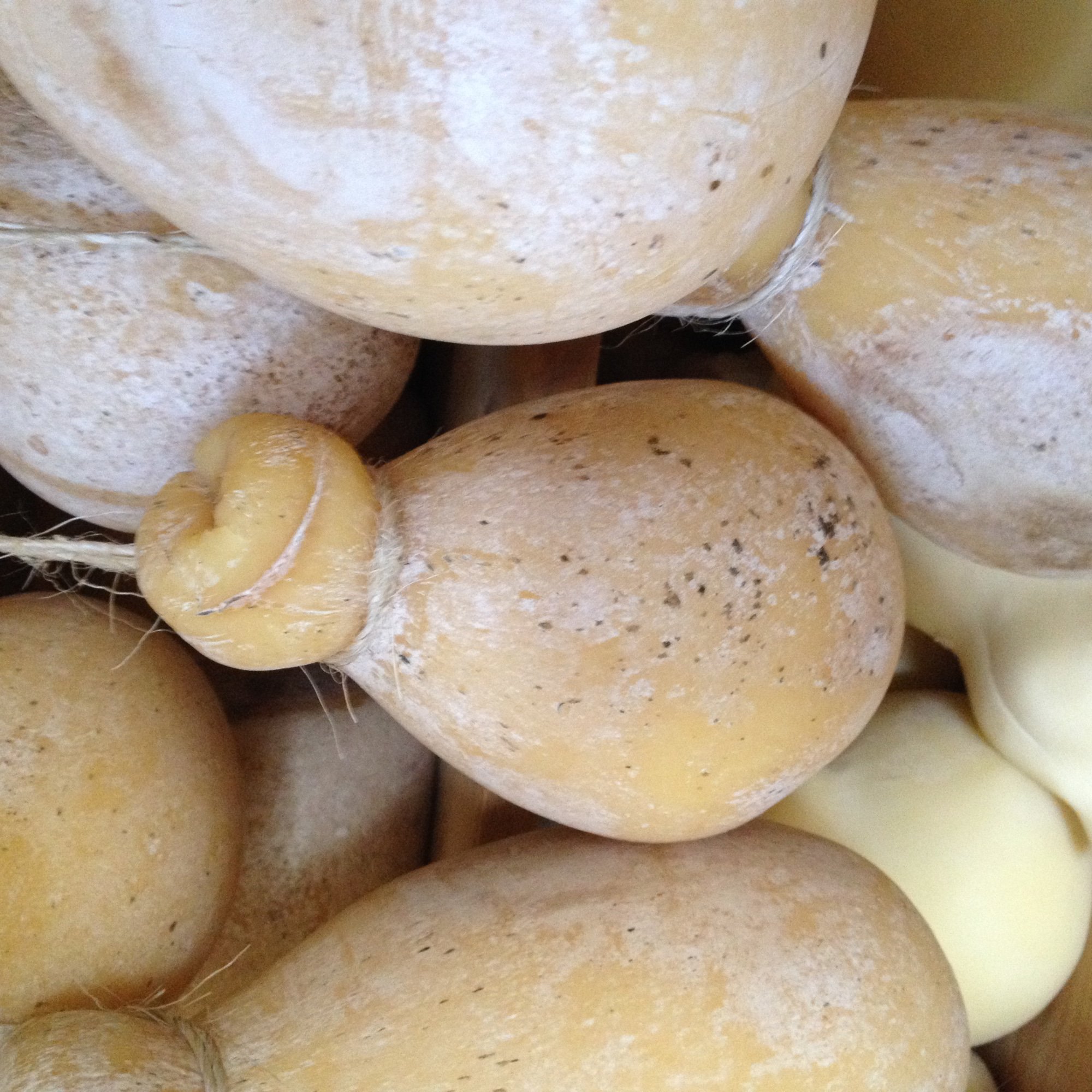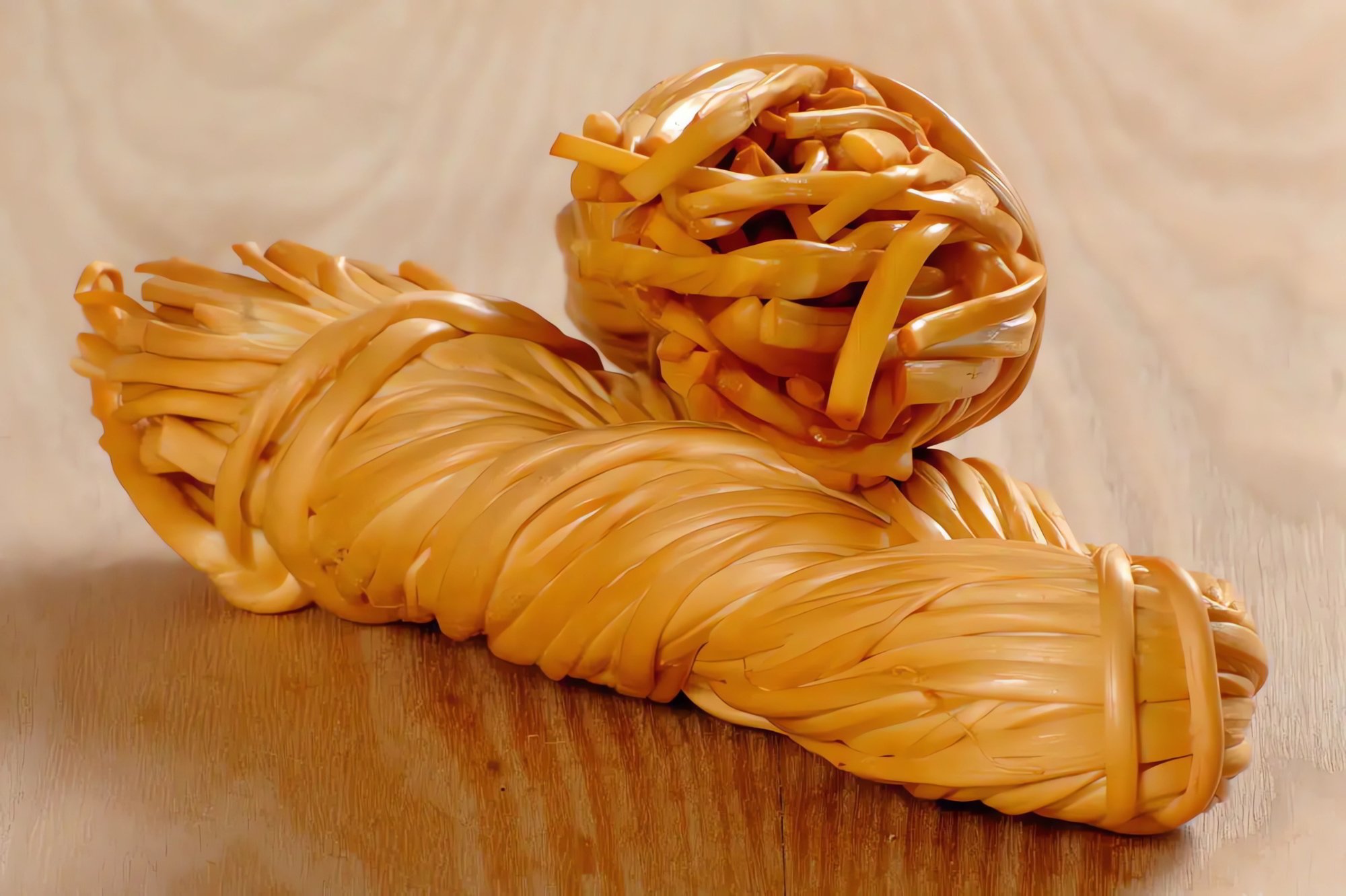The 5 Most Unusually Shaped Cheeses
Cheese shapes
The most common cheese shapes are wheels, wedges, logs, balls, and bricks. But for hundreds of years, cheese has also come in more unusual shapes. Whether sliced or not, these cheeses don’t just add visual interest to cheeseboards but influence the very flavor and texture of cheese. You’ll find these interesting cheeses coming from both the Old World and the New World. Here are some of our favorites.
Donut shaped
The Cheese Primer by Steve Jenkins lists a whopping 24 shapes of chevre, and couronne, or crown, referred to in the United States as donut-shaped, isn’t even one of them. But it’s a memorable shape.
Florence, Woodside Cheese Wrights
Florence Woodside Cheese Wrights photo credit Luke Simon
Produced by South Australia’s Woodside Cheese Wrights, Florence is a donut-shaped, lactic-fermented goat’s milk cheese with a wrinkled Geotrichum rind. It’s named after CEO and Head Cheesemaker Kris Lloyd’s first granddaughter, Florence.
“Creating this style of cheese has been a lifelong dream, but the truth is, it’s not an easy make,” she says. “Achieving consistency and perfection requires total dedication and commitment.” The Geotrichum mold is cultivated in-house to control the flavor profile, and the center hole is cut into each cheese by hand.
That hole is the key to Florence’s character. “It’s dense, thick, fudgy paste relies on the beautiful Geotrichum mold exterior, which slowly penetrates and transforms the texture into something rich, creamy, and full of flavor,” says Lloyd. “Without the central hole, the Geotrichum mold wouldn’t be able to reach the core of the cheese.”
Hooper, Vermont Creamery
Hooper photo credit Vermont Creamery
Introduced in 2024, Hooper commemorates Vermont Creamery’s 40th anniversary. It’s inspired by the Geotrichum rind, donut-shaped cheeses produced in France’s Loire Valley and is named after creamery co-founder Allison Hooper, who studied cheesemaking in Brittany, France.
Hooper is a soft, creamy cheese made with cow’s and goat’s milk and washed with a French gray sea salt brine. The donut shape helps the cheese age evenly. The rind’s color transitions from cream to golden to orange as the cheese ages, and it offers fruity, funky, and buttery flavor notes.
Pyramid shaped
Valençay is possibly the best-known squat four-sided pyramid cheese from France that supposedly Napoleon was crazy about.
Piper’s Pyramide, Capriole Goat Cheese
Piper's Pyramid photo credit Capriole
This pyramid-shaped goat cheese is named after Piper Schad, the granddaughter of Capriole Goat Cheese founder Judy Schad. It’s flavored with smoked paprika, which adds depth to the cheese’s flavor profile and is also a nod to Piper’s fiery red hair.
“Judy believes that [the pyramid shape] is the perfect shape for these Geotrichum-rinded cheeses,” says Capriole General Manager Sam Schad. “It is the perfect balance of rind development to the paste of the chevre.”
Sam explains that the truncated pyramid shape (a pyramid with the top cut off) is inspired by a similarly-shaped traditional French cheese. “The story is an old French tale,” he says. “[According to the story], Napoleon was returning from an expedition to Egypt, and because it brought poor memories, he asked for the top to be cut off from the cheese so as to not remind him of the pyramids in Egypt.”
Cone shaped
You’ll find cone-shaped cheeses in Europe, including San Simon from Spain and Boulette d’Avesnes from France.
Tetilla cheese photo credit depositphotos
The name of this traditional cheese from northwestern Spain’s Galicia region translates to “little breast,” an obvious association given the smooth, conical shape. Written references to the cheese date back to 1753. The distinctive shape was possibly an 18th-century way to brand cheese as being from Galicia, which is known for its dairy industry.
Queixo tetilla has Protected Designation of Origin (PDO) status. According to PDO standards, it must be produced from the milk of Friesian, Brown Alpine and Rubia Gallega cows; made in conical molds of a specific size and dimension; be immersed in brine; and aged for at least a week. The cheese has a smooth, creamy paste. It’s rich, buttery with a slightly acidic, salty flavor.
Gourd shaped
Pasta filata can be used to make many different shaped cheeses. Scamorza and caciacavallo are both Italian pasta filata cheeses with a similar shape, but scamorza is a younger cheese, whereas caciocavallo can be aged.
Caciocavallo
Caciocavallo cheese with slices, Peachyeung316, CC BY-SA 4.0,
The classic gourd-shaped cheese, caciocavallo, originates in southern Italy, and the literal translation of the cheese’s name is “horse cheese.” Alessandro Mascanzoni, Store Manager for Italian retailer Dolceterra, says that may be a reference to the practice of transporting the cheeses by tying them to horses’ saddles.
Caciocavallo’s unique shape is created by tying a rope near the top of the cheese and letting it hang as it ages. The aging period can range from sixty days to two years, depending on the particular style. “The flavor of caciocavallo varies from sweet to spicy depending on the ripeness, not the shape,” says Mascanzoni. “When young, the cheese tastes milky, creamy and slightly buttery. As it ages, it becomes drier and spicier, with an aftertaste that may be reminiscent of the herbs of Lucanian mountain pastures.”
Suffolk Punch, Parish Hill Creamery
Suffolk Punch photo credit Parish Hill Creamery
Peter Dixon, cheesemaker and co-owner of Vermont’s Parish Hill Creamery, explains that Suffolk Punch is the creamery’s version of caciocavallo. “We don’t know of any other cheesemaker in the U.S. making raw milk caciocavallo from milk that is produced only when the cows are grazing on pasture,” he says. The creamery takes a traditional approach, using their own starters for fermentation (most cheesemakers use commercially-produced starters), animal rennet, and unrefined sea salt.
“We usually make 50-60 Suffolk Punches in a batch,” Dixon continues. “One of us stretches the curd in the hot water, kneads it on the table until it is smooth, and cuts it into pieces. Then two to three other cheesemakers help to shape the cheeses. Once the cheeses are molded, we drop them into a vat of cold water to firm them up. The cheeses are brined, after which they are strung in pairs and hung to age for two to twelve months.”
Dixon describes Suffolk Punch as one of the creamery’s most buttery-tasting cheeses, and he notes that the knob at the top is drier, saltier, and more intensely flavored than the rest of the cheese.
String
There are many kinds of string cheese, but some of the most impressive ones are braided or formed into enormous balls.
Chechil cheese braid, photo courtesy of Chechil
According to Chechil CEO Serge Yurkin, chechil cheese originated in Armenia. The smoked, braided string cheese is popular in various regions of Eastern Europe and Central Asia, and it is often served at bars and restaurants as a pairing with beer.
“We are the first and only maker of chechil cheese in the U.S., as it is highly labor-intensive [to produce],” says Yurkin. Chechil, LLC was launched in 2013, and their cheese is produced in upstate New York based on European techniques. Like mozzarella, cheese curds are stretched and kneaded in hot water until they reach the desired elasticity. Next, they are hand-pulled into long strands and hand-braided into an elaborate figure eight. The finished cheese is then salted and smoked.
Yurkin explains that the distinctive braided shape affects both the cheese texture and flavor. “The tightly woven strands create a firm, fibrous, and slightly chewy texture [...] and the braided structure allows the cheese to absorb the smoky aroma more effectively, resulting in a rich and robust flavor.” Like string cheese, peeling the cheese is part of the fun of eating it. But if you’re unsure how to unbraid it, Chechil offers a video on how to peel braided cheese.
Queso Oaxaca, Don Froylan
Don Froylan Queso Oaxaca
There is also quesillo, a popular type of string cheese sold in balls of various sizes. In the U.S. it is commonly known as Oaxaca or "queso Oaxaca.” Like mozzarella it’s a pasta filata cheese, known for elasticity and meltability. Family owned and operated Don Froylan located in Salem, Oregon makes an award-winning version queso Oaxaca, and a smoked version as well.









